BREAKING NEWS: TOMATO IS A FRUIT!
Yes, you knew that already. But you’re still treating it and eating it as a vegetable.
I’m not suggesting that you put chopped tomato in your fruit salad, but I am suggesting you put fruit with fruit. Tomato is a fruit, and plums, peaches and berries are all fruits, and they go together magnificently.
In fact, I hereby declare a trend that’s going to last all summer: The Tomato (Is A) Fruit Salad.
I’m thinking here of the salad of heirloom tomatoes with shiso leaves, raspberries, blackberries and a tart, tangy mustard and lemon dressing I had at the new Busby’s wine and record bar in Sydney from chef Clayton Wells; and the coral trout with a salad of tomato, yellow peach and shiso at The Society in Melbourne.
A fruit, by the way, is defined as anything that contains the seeds of the plant, eg tomato, watermelon, eggplant, capsicum, avocado, as well as peaches, plums, nectarines etc. Okay, some are technically drupes*, but I’m going too fast right now to stop for that. (Oh, allright then, a drupe is a fleshy fruit with a single pit or stone that contains the seed).
I think everyone who cooks and feeds people develops a natural instinct for putting seasonal things together, without worrying too much about whether they identify as fruit or vegetable.
So here’s a tomato and fruit salad to kick you off. The key to it is cutting the watermelon into the same size discs as the tomato, so they look the same. We like a bit of trompe-l’oeil with our salad.
TOMATO, WATERMELON AND BERRY SALAD
A goodly amount of mixed tomatoes, big and small, ripe and firm
Slice or two of watermelon, 1 cm thick
A peach or nectarine
A handful of berries, any kind
3 tbsp extra virgin olive oil
2 tbsp apple cider vinegar
1 tbsp palm sugar
sea salt and cracked black pepper
A few picked mint, basil, oregano or thyme leaves
a few toasted fennel seeds if so inclined
Chop the tomatoes in different ways that suit their shape – slice, halve, dice, but mostly slice. Same with the stone fruit, if using.
Find a cookie cutter or glass the same diameter as most of the tomato slices, and cut out rounds of watermelon.
Arrange all the fruit (yes, including the tomato) on a large serving platter.
Whisk the olive oil, vinegar, sea salt, pepper and palm sugar and spoon over the fruit.
Scatter with mint and toasted fennel seeds (if inclined).
Live on this, and variations on this, all summer long.
If you do it ahead, drain off the accumulated juices before serving (and keep them for something, they’re gold).
Here’s another way of doing it: Just dice tomato, watermelon and feta, toss in olive oil and lemon juice, sea salt, dried oregano and pepper, and scatter with finely sliced red onion.
Or try a peach and tomato salad. Here’s how chef Mark Williamson does it at the new Chez Blue French bistrot in Sydney’s Rozelle – as a more formal arrangement alternating peach and tomato, with goat curd, fennel and almonds.
Or drop the tomato altogether: The other way of doing this is to think of all the ways in which you love to serve tomato – for instance, as an insalata caprese of tomato, buffalo mozzarella and basil; and then just swap out the tomato for fruit.
British chef Julius Roberts did this by replacing tomato with nectarine, which benefits just as much from the creamy mozzarella curd (this pic doesn’t do it credit). My review of his lovely new cook book The Farm Table, will be in the AFR Magazine summer issue, out December 13).
The one crucial element in all this is the quality of the olive oil.
At a very special lunch (King George Whiting!) this week at Margaret restaurant in Double Bay for Cobram Olive Oil, chef Neil Perry talked about how he drizzles his favourite oil, Cobram’s Hojiblanca (a grassy, herbal Spanish olive grown in Victoria), over whatever fruit is in season. “It could be peaches or plums, but at the moment its nectarines. We cut them into chunks, cover them with olive oil and Murray River salt and leave them ready to be grilled, to serve with something like duck. But I always go past and eat them just like that.”
Fruit, he says, is “really quite boring, until it has great olive oil on top of it”. He then sent out bowls of nectarines that had been marinating in the Cobram Hojiblanca olive oil and salt, and yes, he was right. “It’s a really great way to eat fruit at home” he says.
Okay, so we’ve now gone full circle, and ended up by treating fruit as a vegetable. I like that.
Thanks for dropping by! And as always, thanks for your comments and suggestions. Special thanks to Terry for always watching out for supermarket specials so he can keep me in Cobram Olive Oil. Not me specifically (kinky!), but the household.
I would like to acknowledge the traditional owners of the lands and waters upon which I work, live, cook and play; the Gadigal people of the Eora Nation, and pay my respects to Elders past and present, and to the continuing strength and resilience of First Nations people, communities and cultures.
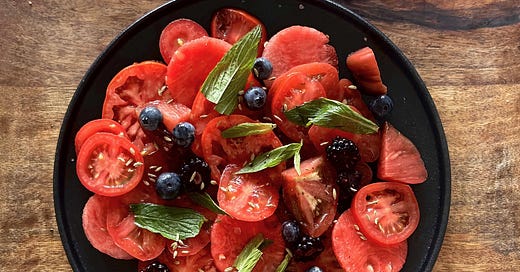


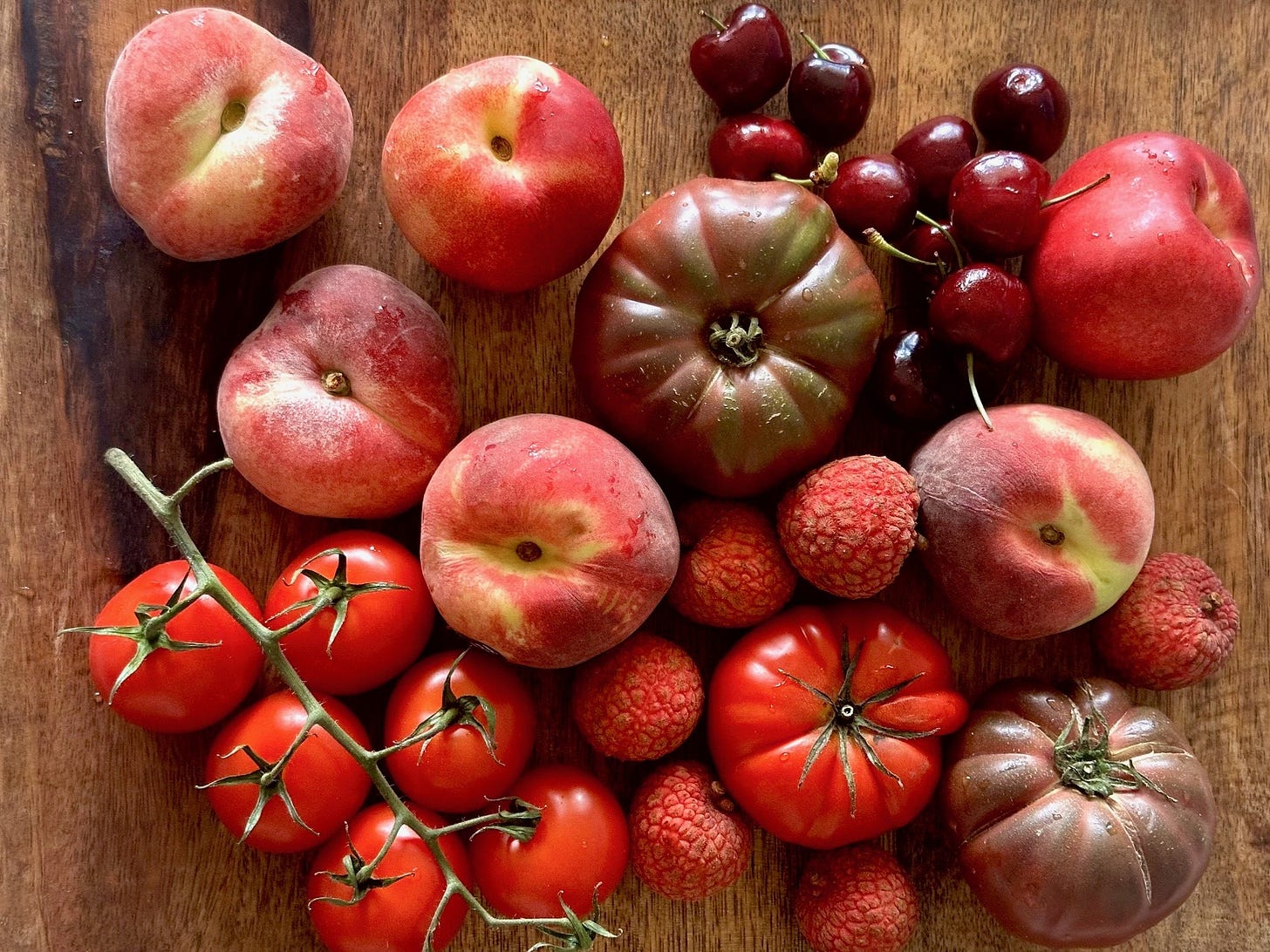

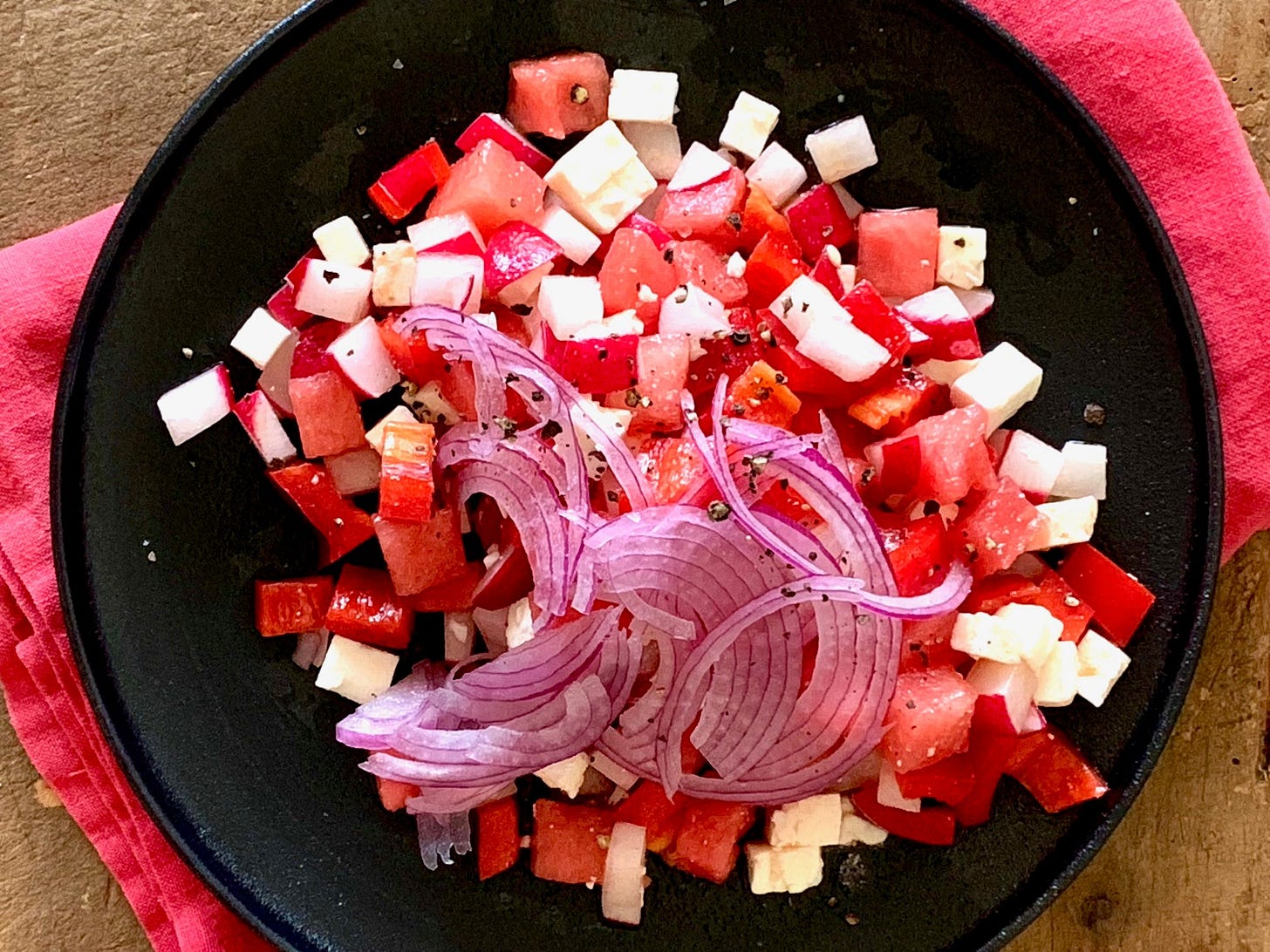
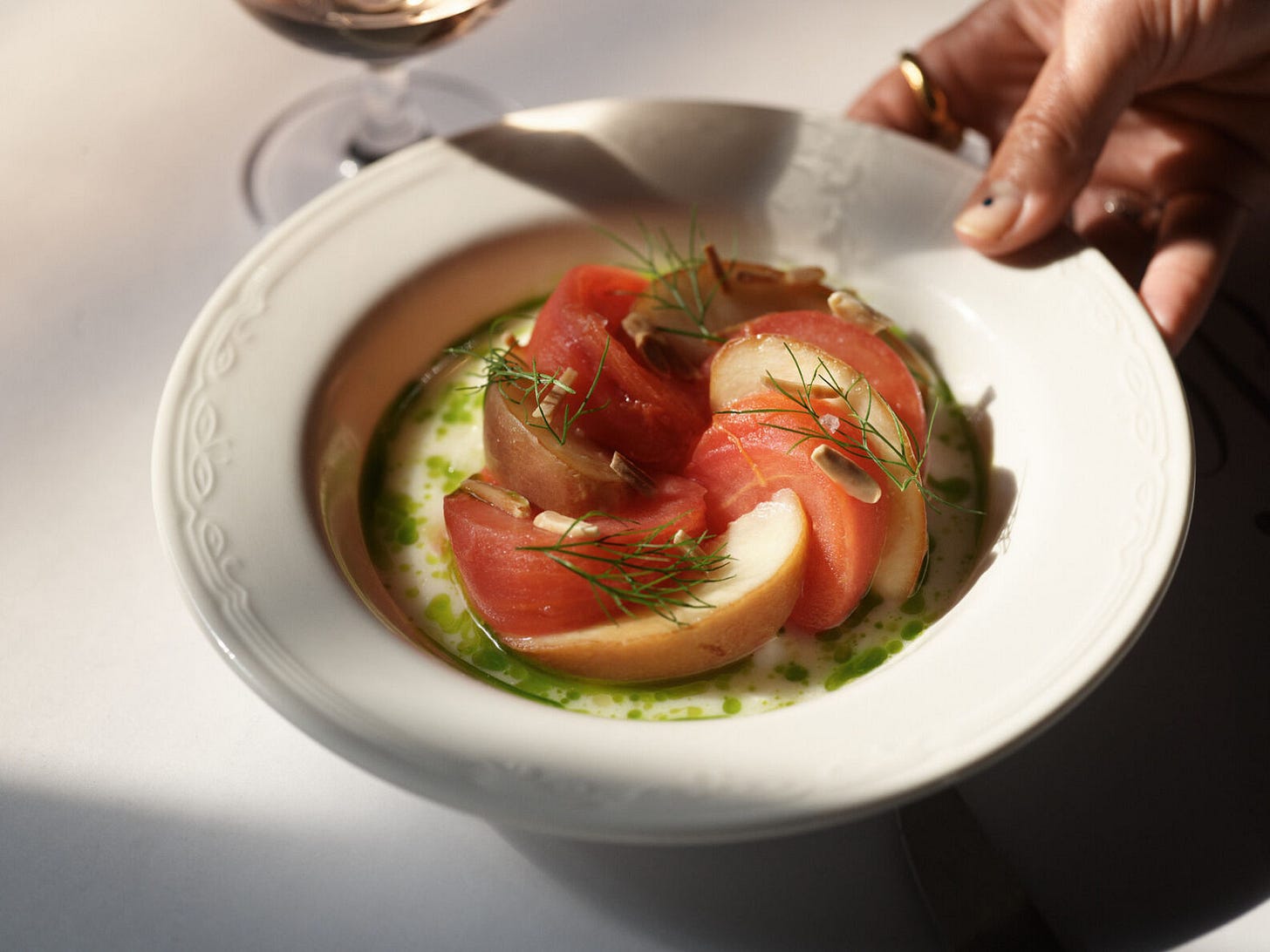

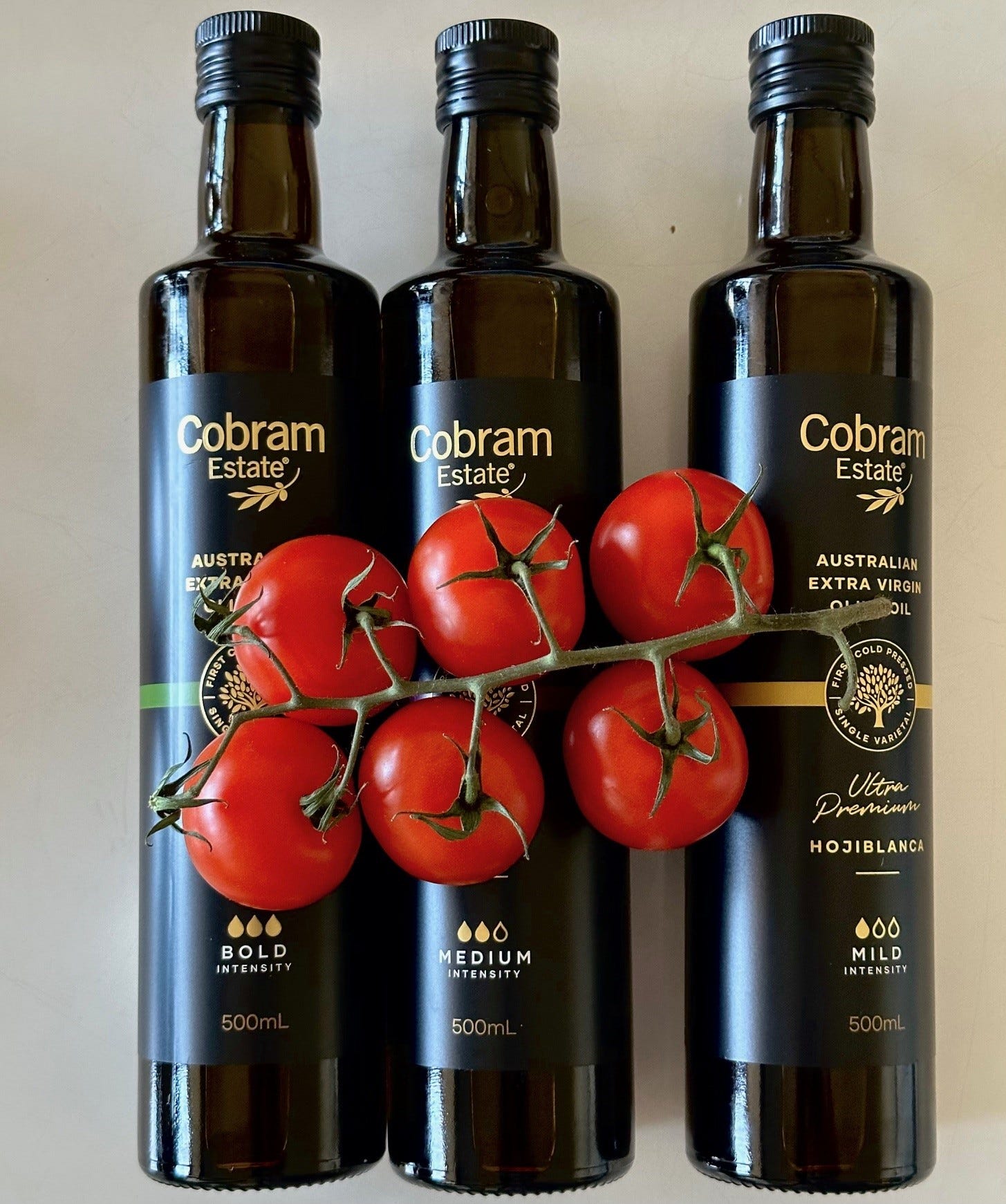
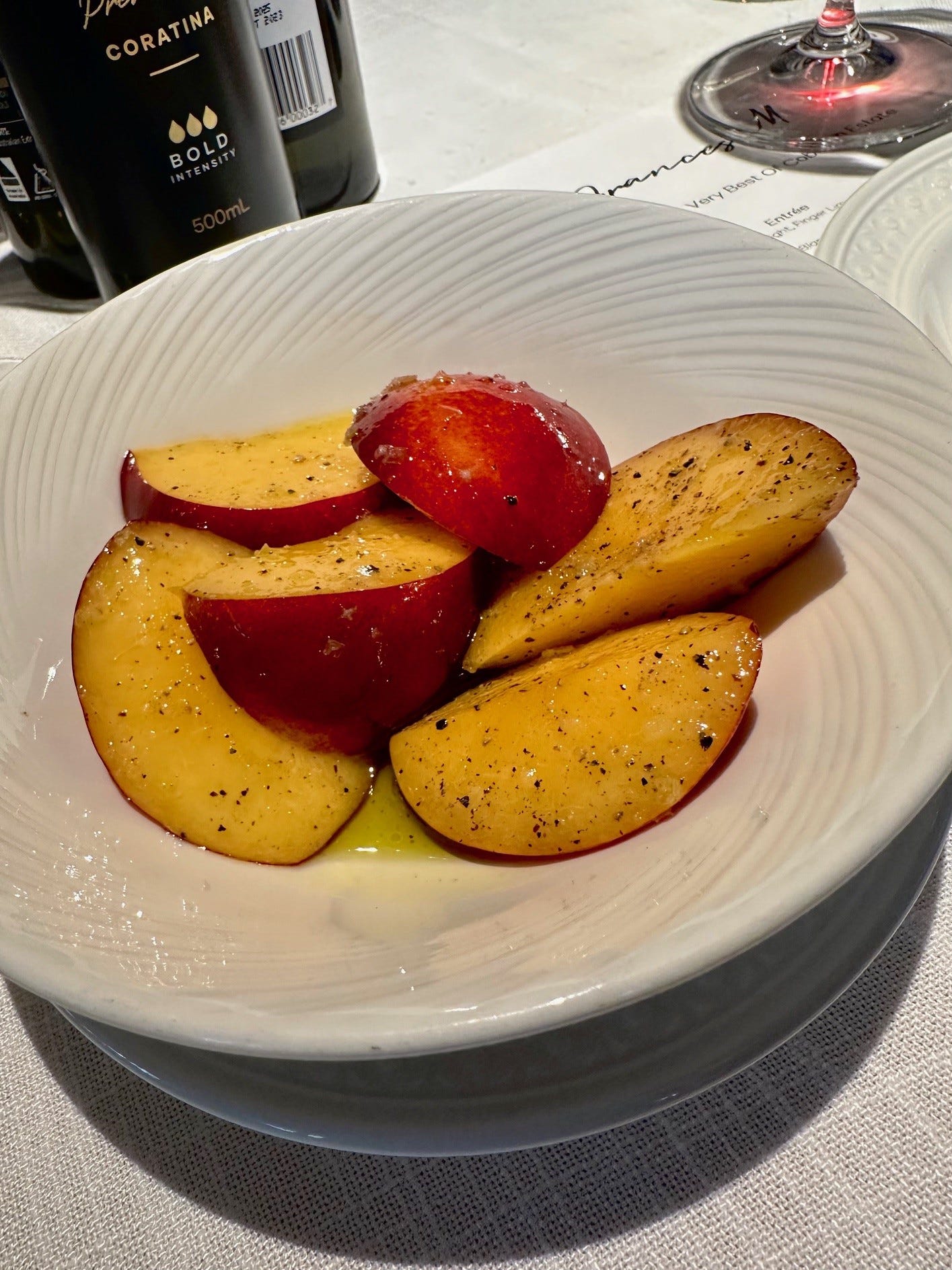
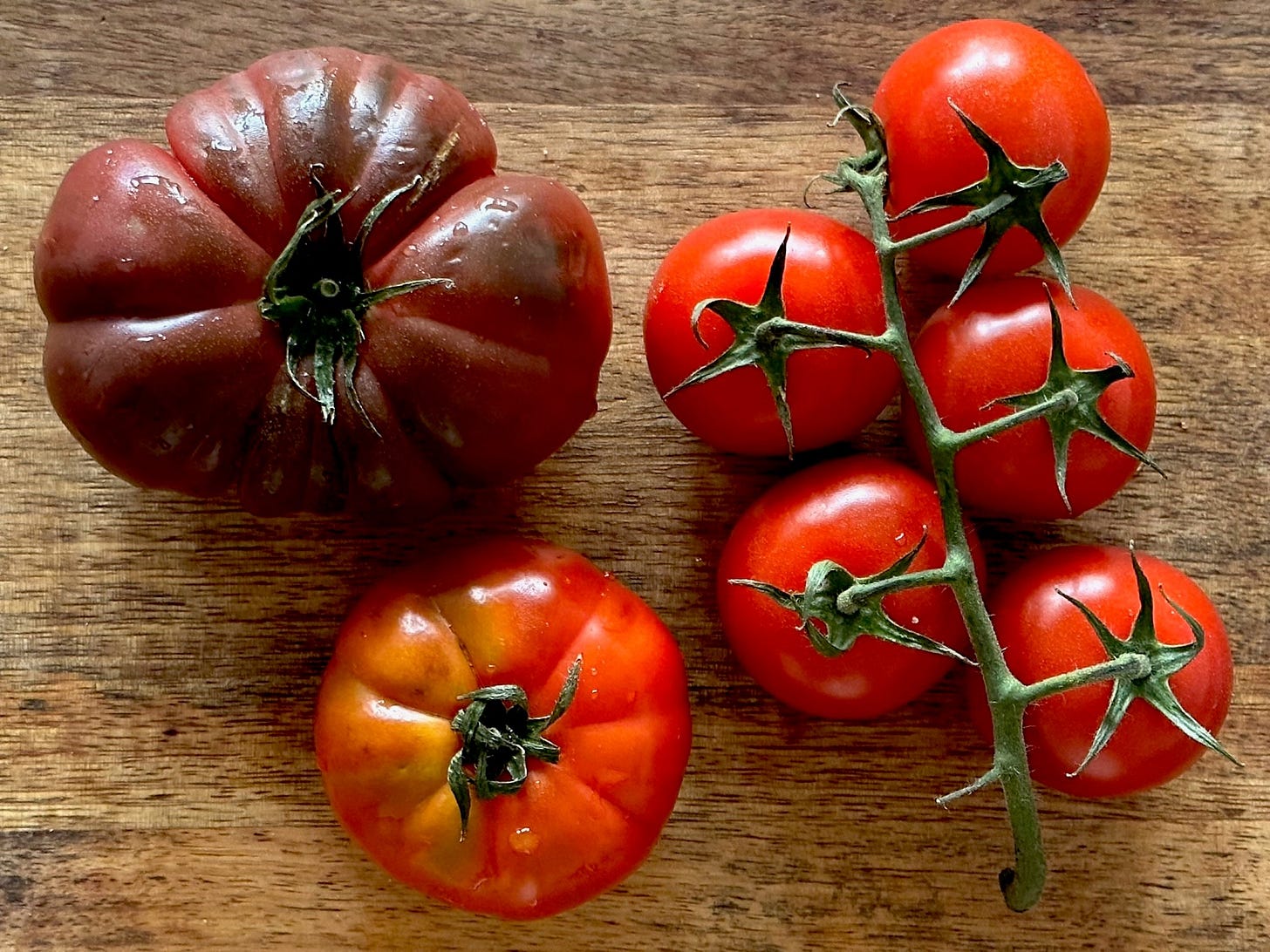
Who would have thought, but then I do add mango and strawberries to salads and a watermelon salad is so refreshing. Thankfully I think we have come to a point in our lives where it doesn’t really matter what you put in a salad as long as the balance and flavours are right.
Definitely have been seeing more of these combos lately. We adore (not kinky) olive oil too. A little aged balsamic on strawberries and tomatoes is pretty yummy